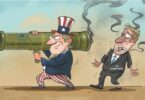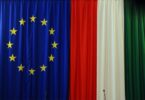Dr. Mohammed Al-Sulami
In the wake of President Ebrahim Raisi’s death, Iran is set to hold a new presidential election on June 28. This election has drawn significant attention from observers keen to analyze the candidates’ profiles, their chances and the influence of key
political figures within the system.
This election comes at a time when Iran is experiencing unparalleled internal and regional tension. Domestically, there is a palpable sense of anticipation and uncertainty. Regionally, the once-covert Iran-Israel conflict has escalated into open, direct military confrontations, adding to the nation’s turmoil.
The situation is further complicated by the departure of a major political figure who was known for his unwavering loyalty to Supreme Leader Ali Khamenei. Raisi had successfully navigated numerous challenges, demonstrating complete obedience to the supreme leader’s directives. His death leaves a significant gap, intensifying the already-complex dynamics as the country prepares for its next presidential election.
A final list of six candidates was announced by the Guardian Council on Sunday. It consists of: Mohammed Bagher Qalibaf, Saeed Jalili, Masoud Pezeshkian, Amir-Hossein Ghazizadeh Hashemi, Alireza Zakani and Mostafa Pourmohammadi. This final list reveals several key insights.
Firstly, as expected, the Guardian Council, which is dominated by conservatives, announced a list dominated by those affiliated with the conservative faction in Iran. The one exception is the reformist Pezeshkian. While the vetting process is supposed to be unbiased, the final list proves once again that this is not the case, with the crowding out of reformist voices in favor of conservative figures known for their loyalty to the supreme leader and the political system.
Among the most notable hard-liners and close associates of Khamenei that are on the list are Qalibaf, the speaker of Iran’s parliament; Zakani, the mayor of Tehran; and Jalili, a former secretary of the Supreme National Security Council who is also a member of the Expediency Discernment Council.
Jalili is expected to be a prominent contender. He is a staunch ally of Khamenei and previously also led Iran’s nuclear negotiation team. Jalili is closely associated with prominent cleric Ahmad Alamolhoda, the Friday prayer leader in Mashhad and father-in-law of Raisi. Jalili has run for the presidency twice before — losing the first time and withdrawing the second.
Qalibaf, a professor of political geography and former commander of the Revolutionary Guards, was reelected as parliamentary speaker at the end of May. Some observers attributed this victory to an intervention from the supreme leader’s office to dissuade him from running for president, while others saw it as an endorsement of his candidacy to represent conservatives. Qalibaf is making his fourth presidential bid, having lost in 2005 and 2013 and withdrawn in 2017 to avoid splitting the conservative vote.
The second observation is that many media reports on the finalization of the candidates’ list indicated confusion and disarray within reformist circles, despite the return to the political arena of prominent reformists. These included Eshaq Jahangiri, who served as vice president under Hassan Rouhani, and Abdolnaser Hemmati, the former central bank governor.
The reformists’ situation worsened following the recent parliamentary elections, for which the Guardian Council disqualified a significant percentage of their candidates. This fueled fears of another round of exclusions and reinforced the perception that the supreme leader’s efforts are geared toward selecting a new hard-line president.
Adding to their challenges has been the lack of a unified stance among the reformists regarding their strongest candidates. Some within the reformist camp are now advocating unifying behind Pezeshkian and encouraging their support base to turn out in large numbers on polling day. It is believed that Pezeshkian’s approval could be a strategic tactic by the regime to boost voting numbers on polling day and to give a veneer of openness and competitiveness to the election process, given that the regime has been suffering from a significant legitimacy deficit, which has worsened with the compounding socioeconomic crises and injustices inflicted on the Iranian people.
However, this could backfire in the event of a wave of support for Pezeshkian, similar to what happened in 2013, when Rouhani was not initially a genuine contender but a number of variables worked in his favor, leading to his surprise victory. This may be an unlikely possibility this time round, as Pezeshkian is not well known. A win for Pezeshkian would go against the trend of recent years of consolidating the regime and system with conservatives in an attempt to secure the succession process. But it is definitely something the supreme leader and other decision-makers will be keeping a close eye on.
The third observation is that, despite former President Mahmoud Ahmadinejad’s significant popularity, he is not favored by Khamenei and was disqualified once again. Ahmadinejad has been described by those close to the supreme leader as leading a “misguided movement” and has been explicitly accused of trying to diminish the influence of the religious establishment. His public disagreements with the supreme leader’s positions led to his interrogation in parliament, making him the first Iranian president to face such scrutiny for his statements, demands and proposals.
The decision to disqualify Ahmadinejad is based on the regime’s principle of “the first mistake is the last” when it comes to former executive leaders. Consequently, many former leaders, including Akbar Hashemi Rafsanjani, Mohammed Khatami, Rouhani and the two Larijanis, have been sidelined from the political arena due to their perceived missteps.
The fourth observation is the approval of many heavyweight conservative figures, mainly to encourage the conservative voting base to turn out in large numbers on election day. This would boost the legitimacy of the system and add some interest to the presidential campaign, given the fact that these figures have vendettas and personal grudges against one another, making the prospect of election debates exciting and interesting to onlookers and observers.
In addition, like past elections, there is a high probability that some of the conservative candidates could step aside in favor of someone like Qalibaf, who is viewed as the prime candidate to take the presidency. Therefore, it would not be surprising if Zakani or Jalili dropped out at some point in favor of Qalibaf, based on instructions from the supreme leader. Qalibaf also has the backing of the powerful Islamic Revolutionary Guard Corps, making his candidacy look strong. However, he is tainted by corruption charges and there is much pessimism over how a Qalibaf presidency would look, given his blend of conservatism and pragmatism.
In conclusion, the regime’s overarching objective seems clear: to select a candidate aligned with the supreme leader’s agenda, as per the equation Khamenei has been cultivating over the years. This involves positioning loyalists in key institutions and sidelining figures from the old guard to ensure a smooth succession process.
It appears that Khamenei and the IRGC are seeking a president who will not waver under regional or international pressure nor veer toward accommodating Western policies, as seen during Rouhani’s presidency. Consequently, their preference leans toward a figure like Qalibaf, who will uphold steadfast stances and policies, particularly regarding the completion of Iran’s nuclear program. However, last-minute changes in the calculations are the norm in Iranian politics, given the introduction of new variables and situations, so this is something to be aware of until the final outcome of the presidential race is announced.







